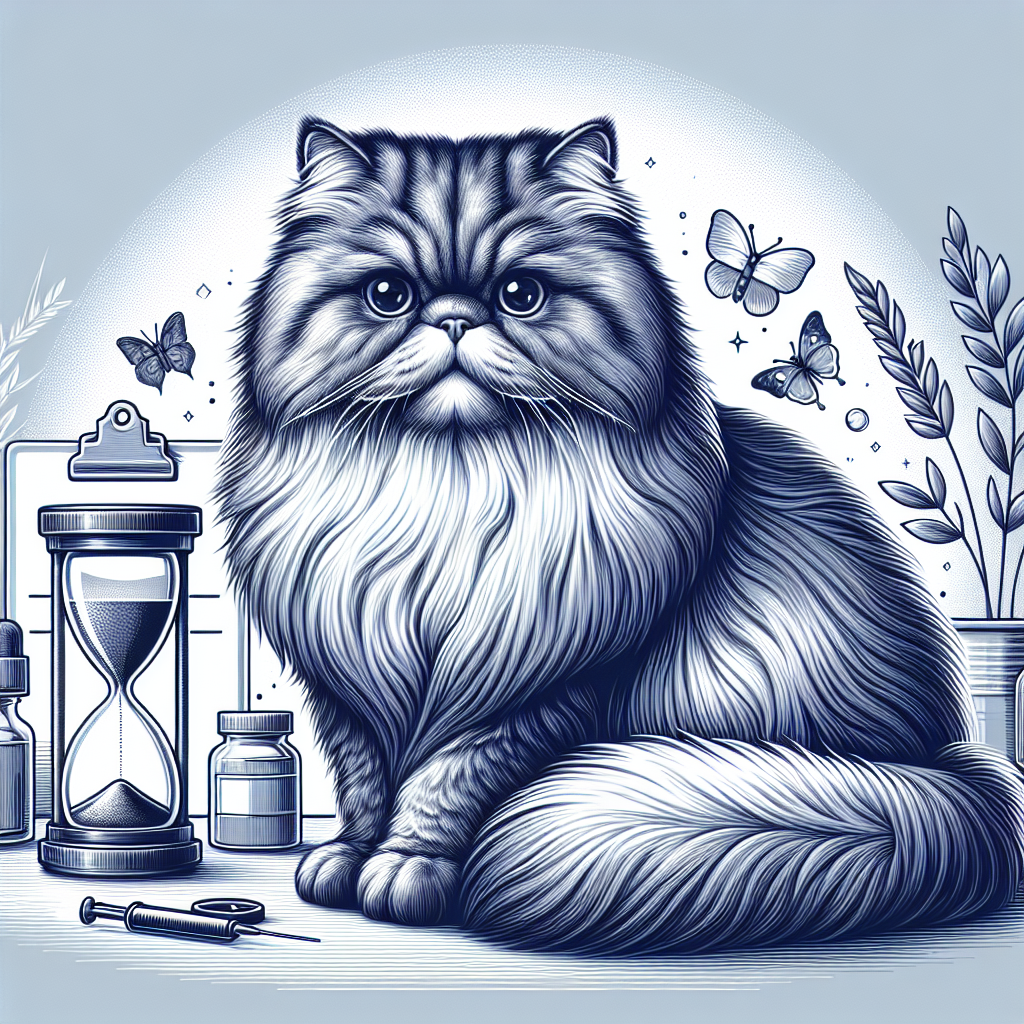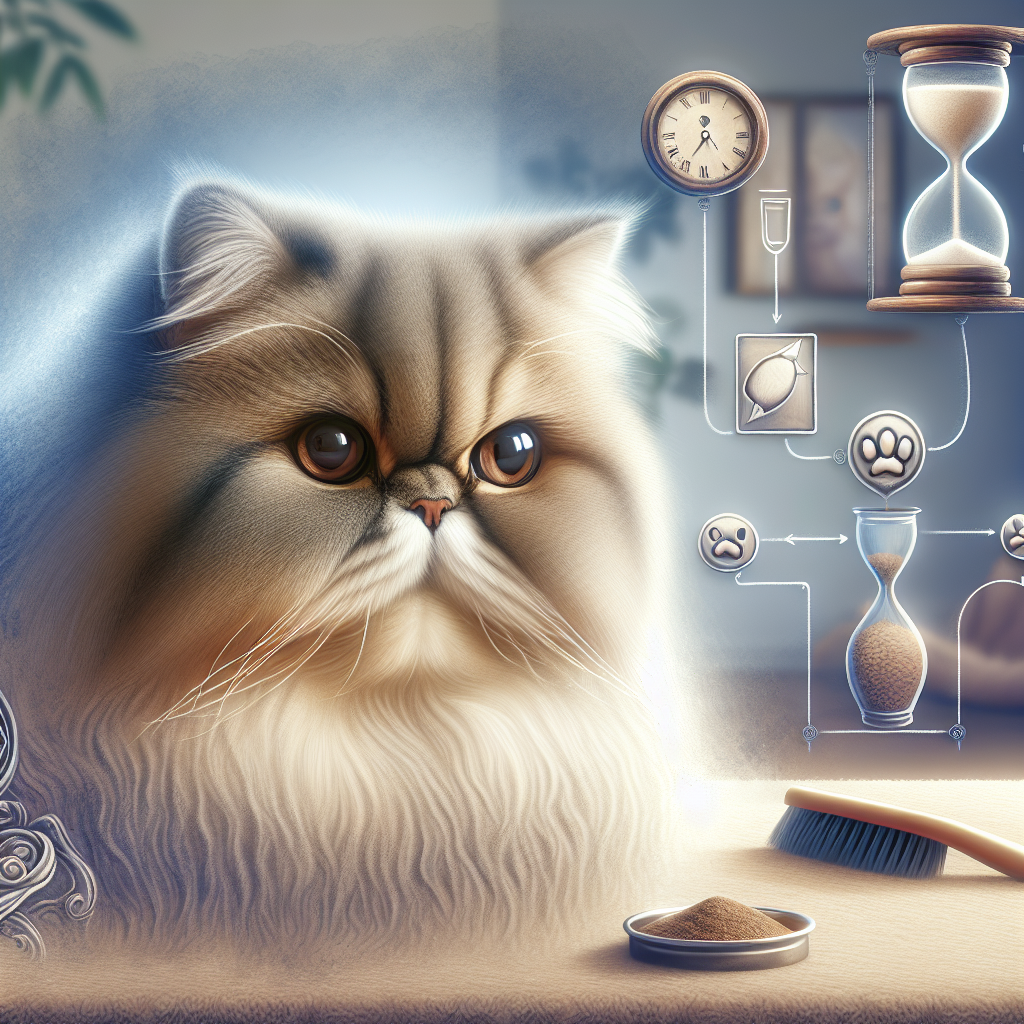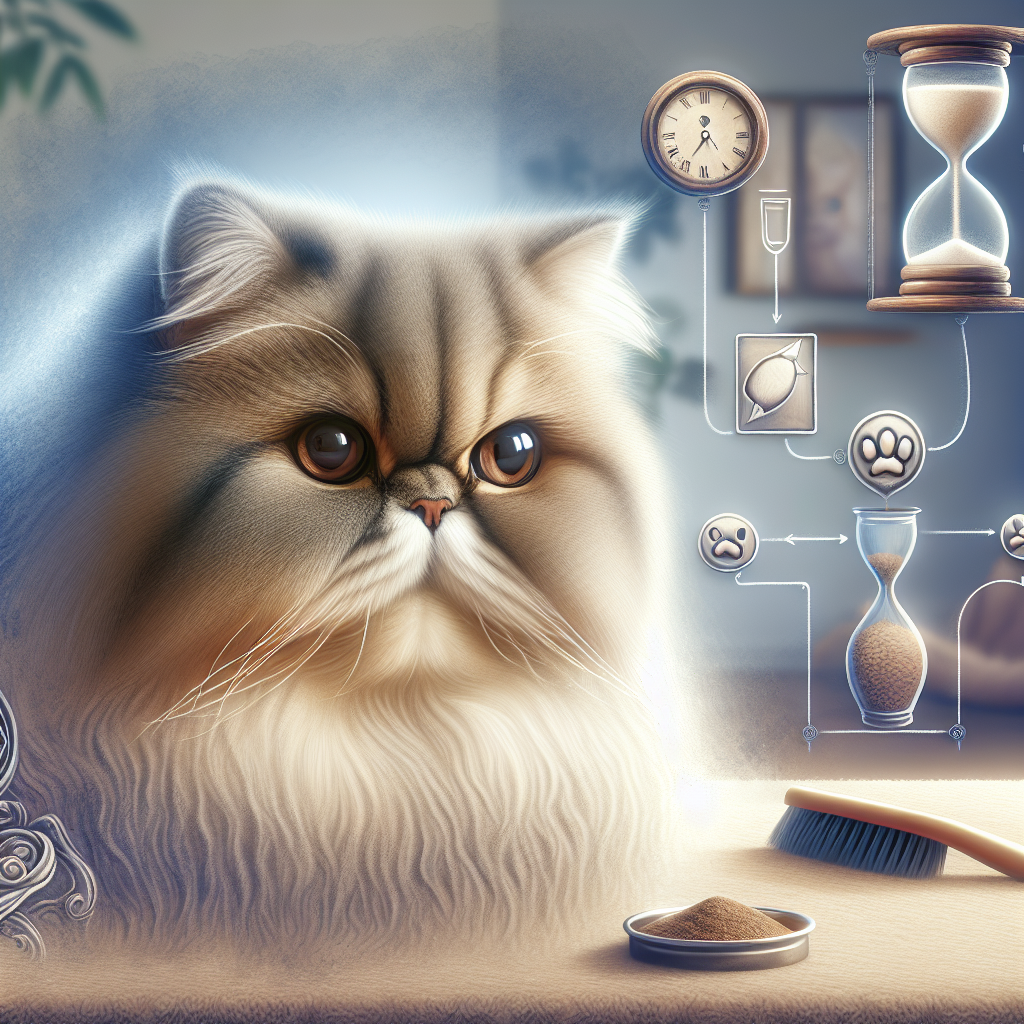Did you know that Persian cats are one of the most popular and beloved cat breeds in the world? These furry felines are known for their long, luxurious coats and gentle personalities. But have you ever wondered how long these elegant creatures actually live? Well, you’re in luck! In this article, we will explore the fascinating lifespan of Persian cats and uncover the secrets behind their remarkable longevity. So, grab a cup of tea, snuggle up with your furry friend, and let’s embark on this delightful journey together!

Overview of Persian Cats
Description
Persian cats are a popular breed known for their luxurious, long, and thick coats, distinctive round faces with prominent cheekbones, and expressive large eyes. They have a sturdy and muscular build, with short legs and a bushy tail. Persian cats come in a variety of colors and patterns, such as solid, tabby, calico, and bi-color.
Origins
The origins of Persian cats can be traced back to ancient Persia (modern-day Iran). These cats were highly prized and revered for their beauty by the Iranian royalty and nobility. They were first introduced to Europe in the 17th century and quickly gained popularity as pets due to their elegant appearance and gentle disposition.
Physical Characteristics
Persian cats have unique physical features that set them apart from other breeds. They have a distinct facial structure, with a flat nose and wide-set eyes. Their long, flowing coats require regular grooming to prevent matting and tangles. The coat comes in various colors, including white, black, cream, red, blue, and silver. Persian cats have a medium-sized body with a sturdy build, and their weight typically ranges from 7 to 12 pounds.
Factors Affecting Lifespan
Genetics
Genetics play a crucial role in determining the lifespan of Persian cats. Some individuals may inherit genetic conditions or predispositions to certain health issues that can impact their overall lifespan. Responsible breeders focus on producing healthy cats with no known genetic disorders, which can contribute to a longer lifespan.
Breed-related Health Issues
Persian cats are predisposed to certain breed-related health issues that can affect their longevity. These include respiratory problems, polycystic kidney disease, eye conditions (such as cherry eye and entropion), and heart diseases. It is important for Persian cat owners to be aware of these potential health concerns and provide proactive care to maintain their cat’s health and well-being.
Care and Diet
Proper care and a balanced diet are crucial factors in determining the lifespan of Persian cats. Regular grooming, including coat care and dental hygiene, is essential to keep them healthy and prevent potential health issues. Providing a nutritious diet suited to their age and specific dietary requirements is vital. Persian cats are prone to obesity, so it’s important to monitor their portion sizes and provide regular exercise.
Average Lifespan of Persian Cats
Typical Lifespan
The average lifespan of a Persian cat is around 12 to 15 years. However, with proper care and attention to their health needs, some Persian cats have been known to live well into their late teens or even early twenties. Each cat’s lifespan may vary depending on various factors, including genetics, overall health, environment, and quality of care.
Longest Living Persian Cats
There have been documented cases of Persian cats living exceptionally long lives. In 2005, a Persian cat named Creme Puff made it into the Guinness World Records as the oldest cat ever, living for an astounding 38 years. Another Persian cat named Pinky lived to be 35 years old, enjoying a long and happy life. These exceptional cases serve as a testament to the potential for Persian cats to live well beyond the average lifespan when provided with optimal care and a nurturing environment.
Health Issues in Persian Cats
Respiratory Problems
Persian cats have a uniquely shaped skull and face, which can contribute to respiratory issues such as brachycephalic airway syndrome. This condition can cause breathing difficulties, snoring, and even heat intolerance. It is important to monitor their breathing and seek veterinary care if any respiratory problems are noticed.
Polycystic Kidney Disease
Polycystic kidney disease (PKD) is a hereditary condition that affects Persian cats. It causes cysts to develop in the kidneys, which can eventually lead to kidney failure. Regular veterinary check-ups and genetic testing are crucial in detecting and managing PKD in Persian cats.
Eye Conditions
Persian cats are prone to various eye conditions, including cherry eye, entropion (inward rolling of the eyelids), and tear duct disorders. These issues can cause discomfort, impaired vision, and potential complications. Regular eye examinations and appropriate veterinary care are necessary to prevent and manage these conditions.
Heart Diseases
Hypertrophic cardiomyopathy (HCM) is a common heart disease found in Persian cats. It causes the thickening of the heart muscles, leading to reduced cardiac function. Regular check-ups and diagnostic tests are essential in detecting and managing heart diseases in Persian cats.

Nutrition and Feeding
Feeding Requirements
A balanced and nutritious diet is essential for maintaining the health and longevity of Persian cats. They have specific dietary requirements that should be met to prevent obesity and other health issues. High-quality cat food formulated for long-haired breeds is recommended, ensuring it provides the necessary nutrients, including protein, vitamins, and minerals.
Common Dietary Mistakes
Overfeeding is a common dietary mistake made by Persian cat owners, which can lead to obesity and associated health problems. Feeding table scraps or a diet high in carbohydrates and fat is also detrimental to their health. It’s essential to follow portion guidelines and provide a diet appropriate for their age and activity level.
Obesity Issues
Persian cats have a tendency to gain weight easily, which can impact their overall health and lifespan. Obesity can lead to various health problems, including diabetes, joint issues, and heart disease. Monitoring portion sizes, feeding a balanced diet, and providing regular exercise are essential in preventing obesity in Persian cats.
Grooming and Hygiene
Coat Care
The signature long and luscious coat of Persian cats requires regular grooming to prevent matting and keep it in optimal condition. Daily brushing is recommended to remove loose hair and prevent tangles. Bathing should be done occasionally using specially formulated cat shampoos. Regular grooming not only keeps the coat healthy but also helps prevent hairballs and skin issues.
Eye and Ear Care
Persian cats are prone to tear staining and eye discharge due to their prominent eyes. Regular eye cleaning with a veterinarian-recommended solution and gentle wiping help maintain eye hygiene. Additionally, their ears should be checked weekly for wax build-up and cleaned if necessary using veterinarian-approved ear cleaning solutions.
Dental Care
Dental hygiene is crucial for Persian cats to prevent periodontal disease, tooth decay, and other oral health issues. Regular brushing using cat-friendly toothpaste and veterinary dental cleanings help maintain their oral health. Providing appropriate chew toys and dental treats can also support dental hygiene.
Exercise and Activity Levels
Indoor vs. Outdoor Living
Persian cats are more suited to an indoor lifestyle rather than being allowed to roam freely outdoors. The risks of potential accidents, exposure to diseases, and theft are minimized when they are kept indoors. Creating an enriched indoor environment with toys, scratching posts, and opportunities for mental stimulation is essential to keep them physically and mentally active.
Physical Activity Needs
While Persian cats are generally known for being calm and laid-back, they still require regular physical activity to maintain a healthy weight and overall well-being. Engaging them in play sessions using interactive toys, laser pointers, or feather wands can help stimulate their natural instincts and provide the necessary exercise.
Mental Stimulation
Persian cats are intelligent animals that thrive on mental stimulation. Interactive puzzle toys, treat-dispensing toys, and regular play sessions help prevent boredom and keep their minds sharp. Providing scratching posts, vertical climbing spaces, and hiding spots can also fulfill their need for mental stimulation.
Environmental Considerations
Temperature and Climate
Persian cats are sensitive to extreme temperatures. They are prone to heat exhaustion due to their flat faces and compromised respiratory system. It is crucial to keep them in a cool and well-ventilated environment during hot weather and protect them from exposure to cold drafts during winter.
Toxic Substances
Persian cats, like all cats, can be sensitive to certain substances that are toxic to them. Keeping them away from common household hazards such as toxic plants, certain foods (such as chocolate and onions), cleaning products, and medications is essential. It’s important to be aware of potential toxins and ensure a safe living environment for them.
Indoor Safety
Creating a safe indoor environment for Persian cats is essential for their well-being. Removing potential hazards such as loose wires, toxic plants, and small objects that can be swallowed is crucial. Providing sturdy and stable furniture, secure window screens, and escape-proof barriers ensure their safety and prevent accidents or injuries.
Regular Veterinary Care
Vaccinations and Preventive Medications
Persian cats require regular vaccinations to protect them from common feline diseases such as feline viral rhinotracheitis, calicivirus, and panleukopenia. Additionally, preventive medications for parasites such as fleas, ticks, and heartworms should be administered as recommended by your veterinarian.
Routine Check-ups
Routine veterinary check-ups are essential to monitor the overall health and well-being of Persian cats. Regular physical examinations, dental check-ups, and diagnostic tests help detect any underlying health issues and ensure early intervention if necessary.
Disease Detection
Early detection of potential health issues is crucial in Persian cats. Regular veterinary examinations, as well as monitoring for changes in behavior, appetite, or litter box habits, can help identify any signs or symptoms of disease. Prompt veterinary care and appropriate treatment increase the chances of successfully managing health conditions and prolonging their lifespan.
Lifestyle and Socialization
Need for Companionship
Persian cats are social animals that thrive on companionship and interaction. They enjoy spending time with their human family members and appreciate a calm and quiet living environment. Providing them with adequate attention, affection, and engaging playtime helps fulfill their social needs and prevents feelings of loneliness.
Interaction with Other Pets
While Persian cats generally have a peaceful and amiable nature, introducing them to other pets should be done gradually and under supervision. They may prefer the company of gentle and calm animals who can coexist peacefully without causing stress or anxiety.
Creating an Enriched Environment
Creating an enriched environment for Persian cats is crucial for their well-being and overall happiness. Providing them with scratching posts, climbing trees, hiding spots, and interactive toys helps keep them mentally engaged and physically active. Rotating toys and providing opportunities for playtime with their human companions help prevent boredom and stimulate their natural instincts.
By understanding and addressing the various factors that can influence the lifespan of Persian cats, such as genetics, breed-related health issues, care, diet, grooming, exercise, veterinary care, and socialization, you can provide the best possible care and support for your feline companion. With love, attention, and a proactive approach to their health, Persian cats have the potential to live long, happy, and healthy lives.

